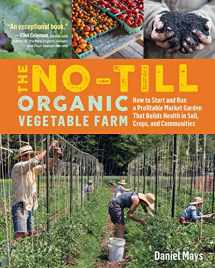
The No-Till Organic Vegetable Farm: How to Start and Run a Profitable Market Garden That Builds Health in Soil, Crops, and Communities
Book details
Summary
Description
No-till -- a method of growing crops and providing pasture without disturbing the soil -- has become an important alternative to standard farming practices. In this comprehensive guide to successful no-till vegetable farming for aspiring and beginning farmers, author Daniel Mays, owner and manager of an organic no-till farm in Maine, outlines the environmental, social, and economic benefits of this system. The methods described are designed for implementation at the human scale, relying primarily on human power, with minimal use of machinery. The book presents streamlined planning and record-keeping tools as well as marketing strategies, and outlines community engagement programs like CSA, food justice initiatives, and on-farm education.


We would LOVE it if you could help us and other readers by reviewing the book
Book review



